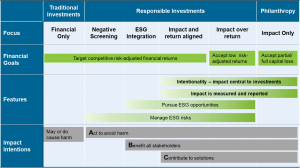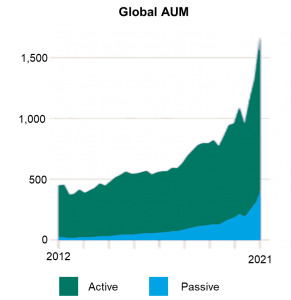Are the United Nations’ Sustainable Development Goals relevant as an investment framework?
In 2015, as part of their 2030 Agenda for Sustainable Development, the United Nations (UN) released their Sustainable Development Goals (SDGs), which are a call to action for all countries to promote prosperity and protect the planet. Perhaps most importantly, and only because of the UN’s involvement, they also authoritatively set out what the world’s governments consider as development priorities through to 2030.
In the years since this announcement, the 17 SDGs, with 169 individual targets, have become more than a just an intergovernmental framework as SDG alignment has permeated different industries. It has found particular acceptance in financial services with numerous investment strategies seeking to classify their portfolio holdings according to the SDGs. In this article, we discuss the applicability of the SDGs as both a meaningful investment framework and means of assessing investment products.
The shift towards responsible investing
The increasingly visible move by asset managers to align their holdings to the SDGs has been driven by the accelerating transition of private capital from traditional investments (with a purely financial focus) to now increasingly ESG-integrated, and even impact, investment approaches.
The spectrum of responsible investing[1]

2020 was a watershed year and we saw the global year-on-year net flows into sustainable funds more than double. The ability to demonstrate alignment with the SDGs and be classified as ‘sustainable’ is often one of the steps by which asset managers seek to be exposed to this deluge of capital.
Sustainable funds’ AUM and net flows (US$bn)[2]

The SDGs as an investment framework and means of evaluating investment products
There are clearly areas in which private capital can make a significant contribution towards the SDGs (which are illustrated below). For example, Goal 6 (clean water and sanitation) and Goal 7, (affordable clean energy) are both advanced by a number of very impactful publicly listed companies. There is also clear evidence of the alignment of private enterprise with Goals 3 (good health and well-being), 4 (quality education), 9 (industry, innovation and infrastructure), 11 (sustainable cities and communities), and 12 (responsible consumption and production).
However, as a direct result of the founding objectives as an intergovernmental initiative, several of the goals are oriented towards systemic challenges facing the world. For example, Goal 1 – ‘End poverty in all its forms everywhere’ and Goal 16 – ‘Promote peaceful and inclusive societies for sustainable development, provide access to justice for all and build effective, account and inclusive institutions for all’, are not goals for which the private sector has clear solutions in the form of commercial products and services. WHEB Asset Management’s analysis suggests that ten of the seventeen goals fall into this category of broad systemic objectives and are accordingly not directly addressable by private investment capital. It is for these reasons that we believe that the SDGs can at best only provide a partial or incomplete investment framework.
Another challenge facing the SDGs is their broad framing. For example, Goal 9 ‘Build resilient infrastructure, promote sustainable industrialisation and foster innovation’ is such a broad goal as to apply to whole swathes of the listed market, including potentially less desirable or sustainable businesses. This further erodes the value of the framework as a way of differentiating between different companies in their contribution to the goals.
Of course, this does not mean that the private sector has no role to play in addressing the systematic challenges. Businesses through their behaviours can promote ideals that are consistent with the SDGs. Examples include striving to achieve gender equality in their employment practices (Goal 10 – ‘Reduce inequality within and among countries’), or adopting transparent and ethical practices that make it more difficult for other actors to engage in bribery and other corrupt practices (Goal 16 – ‘Promote peaceful and inclusive societies’). All businesses, no matter what they sell or in which industry they operate can and should play an indirect role in supporting the SDGs, however we question the practice of claiming direct alignment with the systemic challenges.
A more holistic approach to assessing investments’ RI characteristics
It is clear that investors can play a vital role in advancing the SDGs by encouraging businesses to adopt behaviours and conduct themselves in ways that indirectly support them. The SDGs also create economic change and drive demand for products and services that help to deliver the goals directly. Investment strategies with exposure to these growth companies are likely to benefit from these changes.
However, in our view, when evaluating the ESG, sustainability and impact characteristics of investment products, SDGs should form only one facet of the overall evaluation. There is no one size fits all formula and each strategy should be evaluated relative to its objectives but importantly, any claims about ESG, sustainability and impact should be subjected to as much scrutiny as any other claims about the investment process. Impact reports, that quantify any environmental and social impacts associated with the investment, and stewardship policies that the asset manager employs to drive corporate change and promote more sustainable business practices provide a useful starting point.
The Pengana WHEB Sustainable Impact Fund
The Pengana WHEB Sustainable Impact Fund is managed by UK-based WHEB Asset Management who are globally recognised as thought leaders in impact management, measurement and reporting.
The Fund invests in a diversified global portfolio of high-quality companies which produce goods and services to address the challenges of sustainability. Portfolio companies are selected based on how they conduct their businesses (ESG), how impactful their products are, and of course valuations and deep fundamental analysis. Investments target nine sustainable investment themes – five of these are environmental (cleaner energy, environmental services, resource efficiency, sustainable transport and water management) and four are social (education, health, safety and well-being). WHEB’s mission is ‘to advance sustainability and create prosperity through positive impact investments.’
[1] Source: WHEB Asset Management. Adapted from Phenix Capital, Impact Management Project
[2] Financial Times (6 February 2021) ESG funds defy havoc to ratchet huge inflows. Available at https://www.ft.com/content/8e9f8204-83bf-4217-bc9e-d89396279c5b

